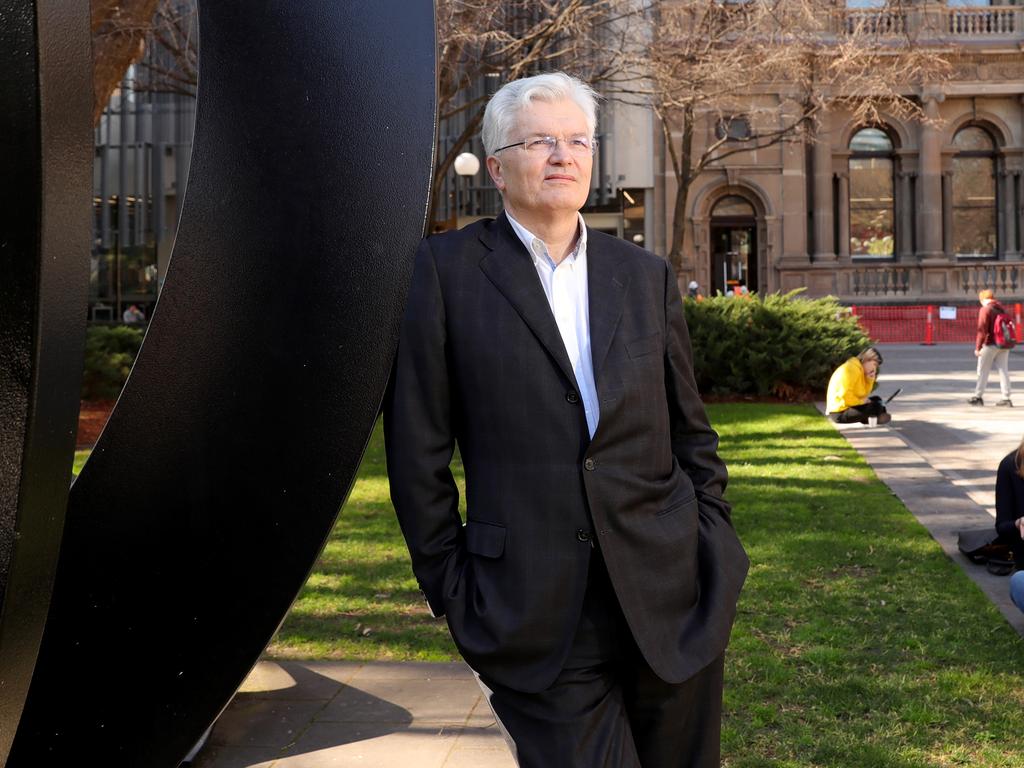
Here was a story that almost covered itself, and which readers and viewers lapped up, boosting paid online subscriptions. With newsrooms largely closed during lockdowns, journalists could cover big slabs of the story from home. The politicisation of the pandemic lent itself to lots of culture war opinion writing to drive traffic to websites.
Admittedly at its height during the first wave last year and during last winter’s Delta wave in Sydney and Melbourne, daily press briefings by Victorian Premier Dan Andrews and then NSW premier Gladys Berejiklian were well attended by real reporters rather than Zoom callers. What easy content those daily briefings were for news television.
Now, just as it seemed newsrooms were opening up and news consumers could expect a bit more variety in their news diets, along comes the Omicron variant. The usual suspects wasted no time ramping up the virus threat.
Last Wednesday, as NSW case numbers blew out to 1360, the electronic media and newspaper websites threw caution and experience to the wind to pump up modelling released by NSW Health Minister Brad Hazzard showing NSW could have 25,000 cases a day by the end of January.
Never mind all the overblown modelling that had fallen flat over the previous 20 months. Modern media consumers no longer punish news sources that publish material that turns out to be hopelessly wrong. Remember 2020s predictions of 100,000 deaths in Australia by The Australian Financial Review (March 5, 2020) and up to 150,000 deaths by The Sydney Morning Herald (March 16, 2020). The actual number two years in is 2072, fewer than two bad flu seasons.

Worst – as usual – with the Omicron scare last week was ABC radio, the news equivalent of the old afternoon tabloids that used to beat police and courts stories to within an inch of their lives. The World Today on Wednesday devoted its entire 25 minutes and 11 seconds to Omicron, vaccination research, easing of Covid border restrictions and increasing UK restrictions as Omicron hit London. To be fair to Aunty, at least health editor Norman Swan was more cautious on 7.30 the previous night, accepting Omicron is likely to be less severe than previous variants.
This column back in March last year argued there was a link between a secure public sector pay cheque and journalistic advocacy for ever-tighter Covid restrictions. Tightening has been the preferred ABC position throughout the pandemic. And where once journalists of the left advocated for society’s less fortunate, many in the media now condemn the poor for wanting sufficient mobility to earn their weekly wage. They are branded as right-wing anti-vaxxers even if they are only protesting because they want to go back to work.
Other trends in pandemic reporting returned last week. The national 7pm ABC-TV News on Wednesday devoted about half its bulletin to state-by-state Covid stories. It went hard on the NSW numbers but somehow forgot to mention the Victorian daily number, which at 1405 was higher than NSW.
Many of the ABC’s Victorian hosts have been noticeably quiet about the stubborn refusal of the Victorian numbers to fall below 1000 a day. There is little mention Covid-19 deaths in Victoria far exceed those in NSW.
NSW that day passed Victoria in case numbers, 1742 to 1622. Yet Victoria reported nine deaths, 384 hospitalised and 87 in ICU. NSW reported no deaths, 192 in hospital and 26 in ICU.
Much of the Omicron coverage has quickly defaulted to the pro-lockdown, pro-restrictions position preferred by the ABC and Guardian Australia. On The Drum on Wednesday afternoon, host Ellen Fanning seemed at a loss to understand why NSW Premier Dominic Perrottet was continuing with the state’s plan to ease mask mandates and QR code check-ins that day.
Peter Collignon, one of the nation’s most sensible public health experts, seemed amused given there is no evidence Omicron is as big a health danger to Australians as the previous Delta wave, and Australia now has very high vaccination rates. Professor Collignon, writing in the SMH and The Age that morning, discussed whether NSW was right to be opening up just as case numbers were rising and Omicron had arrived.
“Will Covid-19 spread over the next few months? Yes it will. But the major consequences of infection (deaths and serious disease leading to hospitalisation) are already markedly reduced … serious complication rates should continue to fall as even more people get vaccinated and then get their five month boosters.”
Indeed, evidence from South Africa, where vaccination rates are low compared with Australia, gives reason to hope Omicron may end up being the beginning of the end of the pandemic as the virus becomes endemic, like influenza. Omicron appeared by late last week to have peaked in South Africa. And given its low vaccination rates there was evidence immunity from previous infections was allowing patients’ T cells to fight the virus.

Several studies here and in the US and UK also noted although two vaccine doses were proving less effective against Omicron, a third booster dose would give high protection against severe illness. Breakthrough infections were more common than with previous variants — probably because of mutations to the infamous spike protein of the virus — but several scientists pointed out this mattered little if the vaccinated did not get particularly sick.
While health professionals remain cautious about Omicron, chief medical officer Professor Paul Kelly had a good point when he said on November 29 that if Omicron did prove more contagious but less severe it could be a “Christmas present”. Such an outcome would boost most people’s immunity without causing mass hospitalisation and death.
While the catastrophists in the media won’t like it, it was fascinating to read their hero, Microsoft founder Bill Gates, on December 9 suggesting Omicron could indeed be the way out of the pandemic. “At some point next year Covid-19 will become an endemic disease in most places,” Gates tweeted.
CNBC asked what it might look like if Covid became “a disease of relatively low severity that constantly circulates through parts of he world”.
Timothy Brewer, a professor of epidemiology at UCLA, said: “It’s very unlikely that we are ever going to be able to get rid of Covid-19. Like most respiratory viruses it’s probably going to be worse during the cold months and less so during the warm.”
Living with Covid would require a shift in mindset, Dr Brewer said. “We have to stop acting like if we do everything right, we’re going to make this virus completely go away.”
It’s where leaders who talk about living with the virus are correct, and state premiers who pretend they can eliminate it will be proven wrong. As Nick Coatsworth, former federal deputy chief health officer told ABC’s 7.30 on Thursday, the media needs to focus on instances of hospitalisation and severe disease rather than case numbers, which will mean even less as immunity improves with vaccine boosters.








Covid-19 has been a blessing for much of the media, coming after global tech giants took most of the ad revenue that used to sustain the expensive business of journalism.